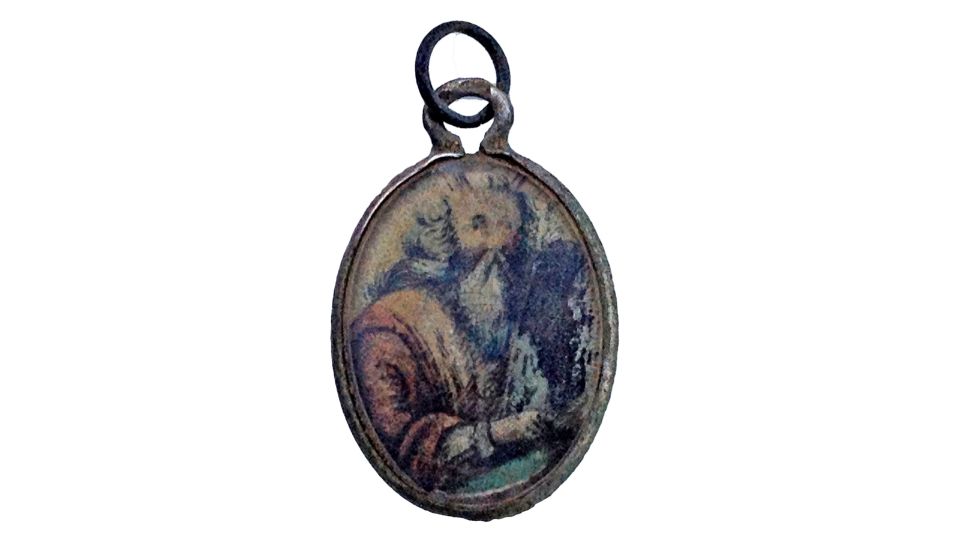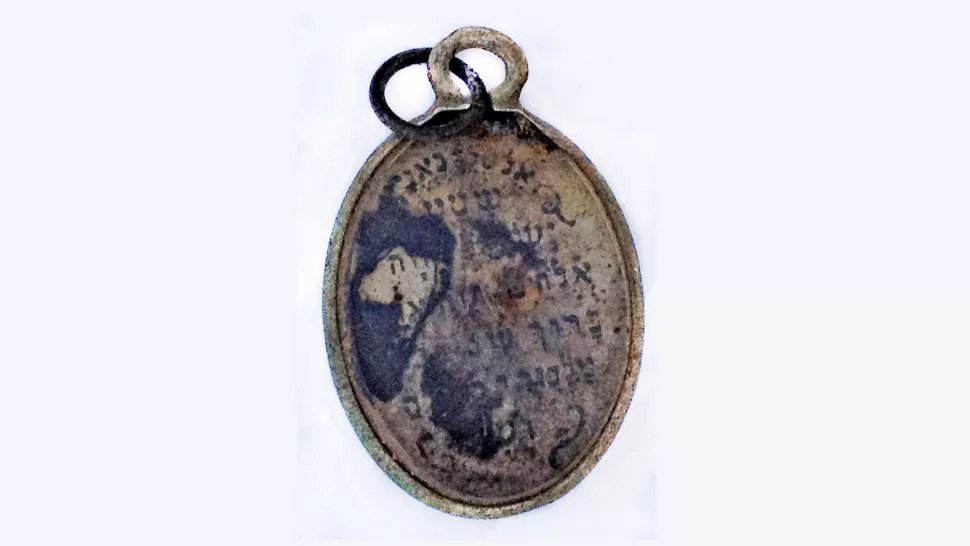Pendants from Holocaust victims found near gas chamber in Poland
Three pendants bearing the Hebrew prayer Shema Yisrael (“Hear O Israel”) have been excavated at the Sobibor extermination camp in Poland, the Israel Antiquities Authority (IAA) announced on Thursday.
Two of the amulets depict Moses holding the Ten Commandments on the reverse side.
Researchers have been able to identify that the three pendants, all different from one another and made by hand, originated in Eastern Europe.

One came from Lviv in Ukraine, and the other two from Poland and Czechoslovakia.
The nearly decade-long excavations of the site — where approximately 250,000 Jews were killed by the Nazis between 1942 and 1943 — were directed by Wojciech Mazurek from Poland, Yoram Haimi from the IAI and Ivar Schute from the Netherlands, assisted by local residents.
“Little is known about the stories behind the pendants, which are heartbreaking,” Haimi said in a statement.
“It has been possible to identify a kind of tradition or fashion among the Jewish communities of Eastern Europe with pendants that were inscribed with ‘Shema Yisrael’ on one side and a depiction of Moses and the tablets of the Law on the opposite side,” he said.

“But were they distributed in synagogues by local Jewish communities or possibly produced for individual orders? Research of the pendants is ongoing and we invite the public to provide us with details concerning them.”
One of the pendants was discovered in the remains of a building where Jews were undressed before being led to the gas chambers. Another, on which Latin numbers were inscribed, was uncovered in the area where victims were undressed in Camp II. A third was next to a mass grave.
“The personal and human aspect of the discovery of these pendants is chilling,” said Eli Eskozido, director of the IAA.
“They represent a thread running between generations of Jews – actually a thick thread, thousands of years old, of prayer and faith.”







